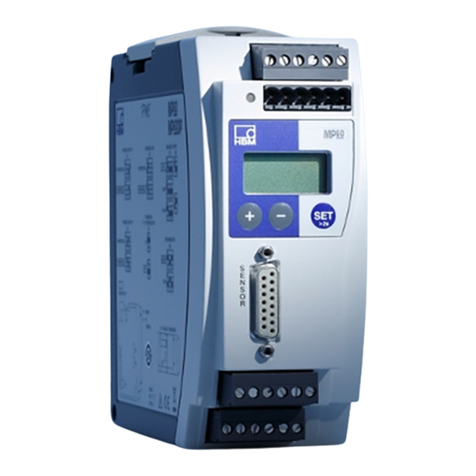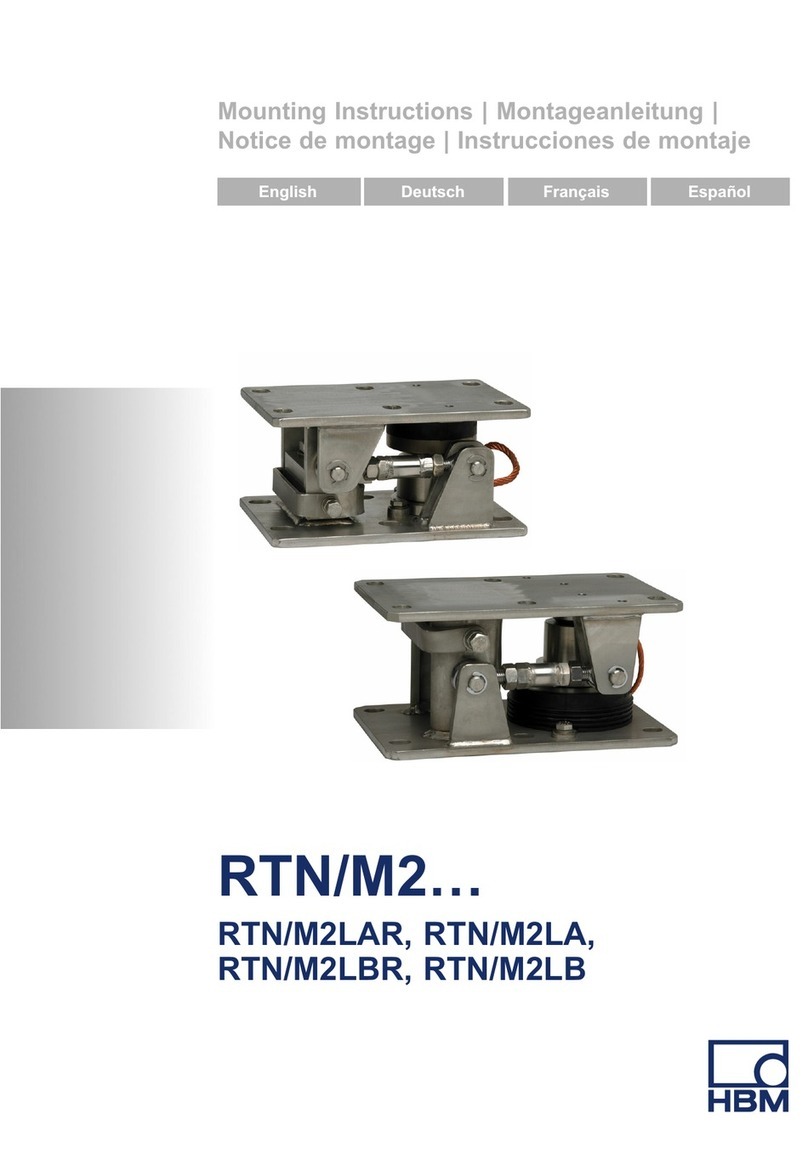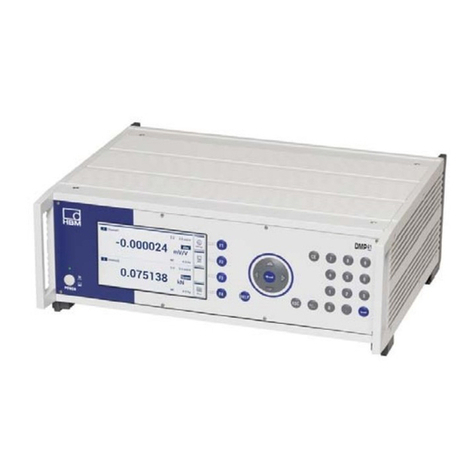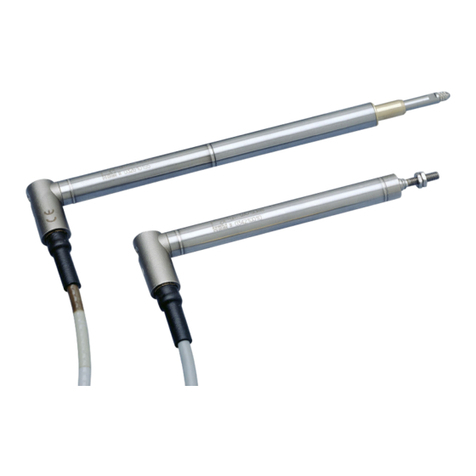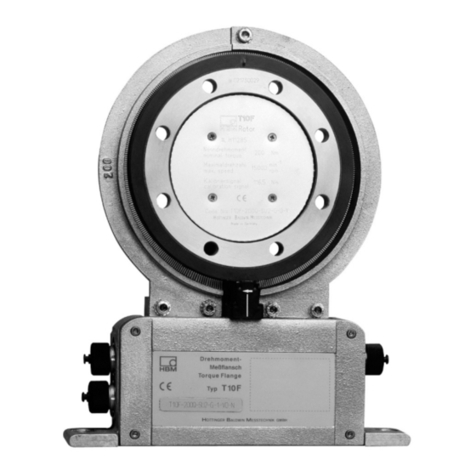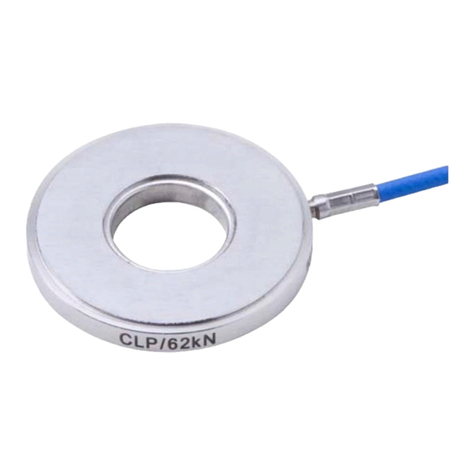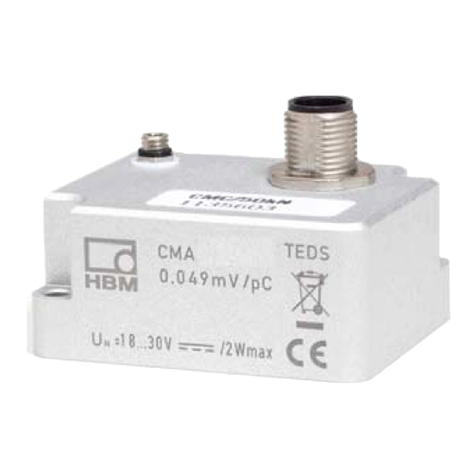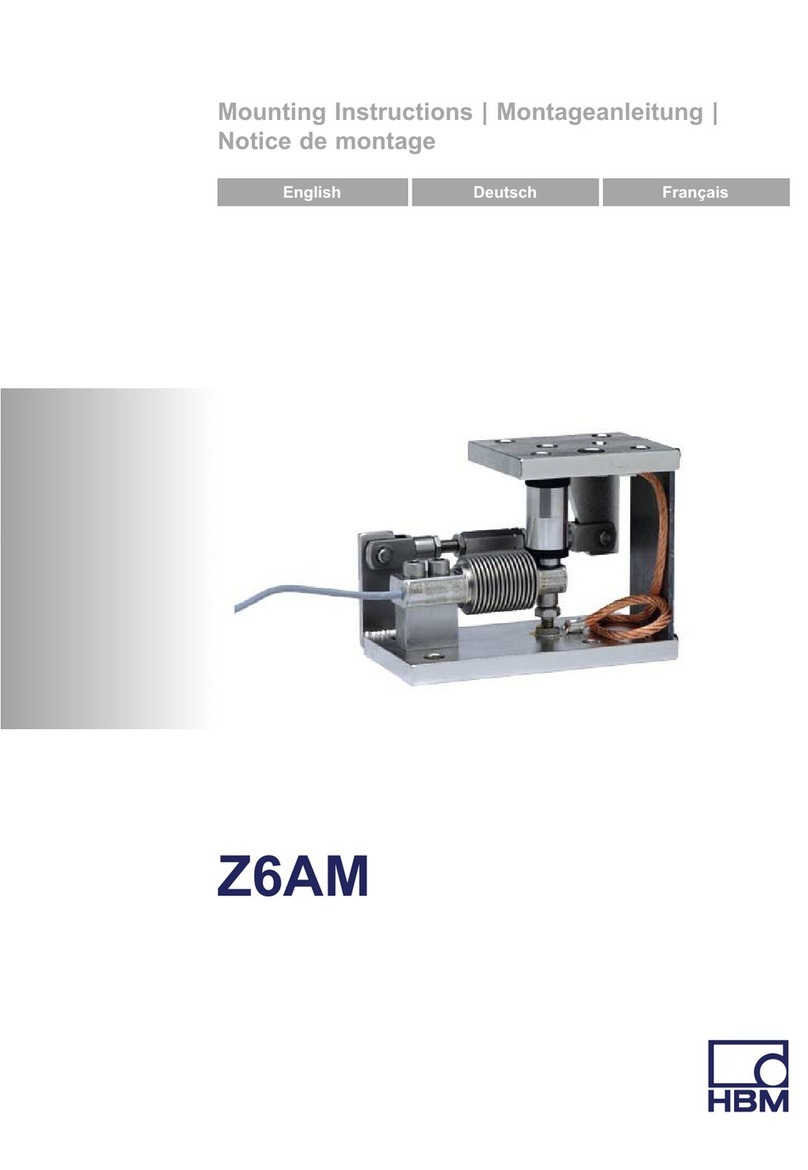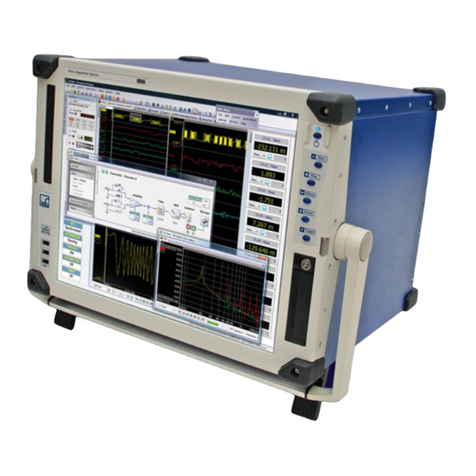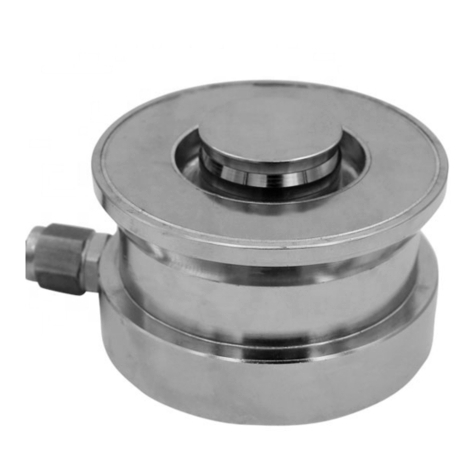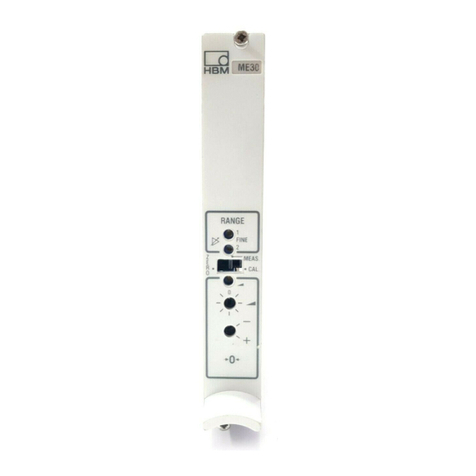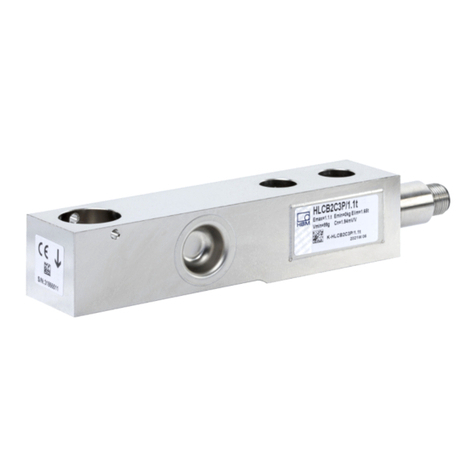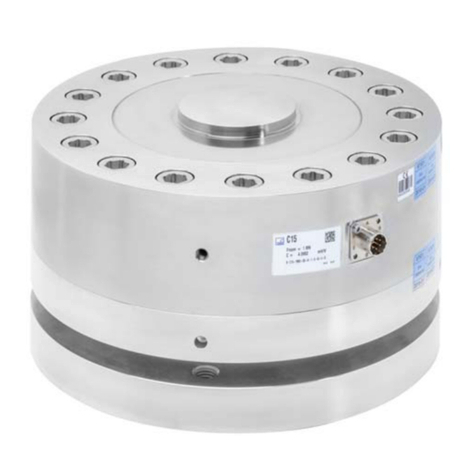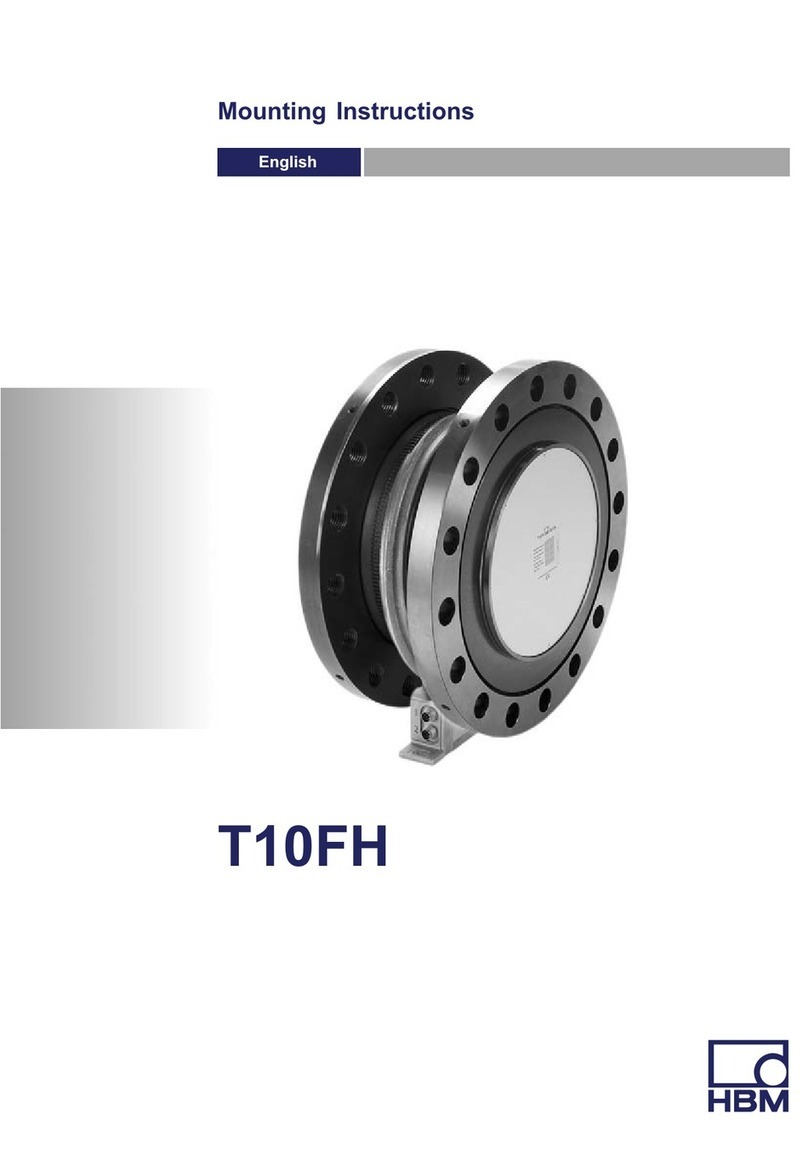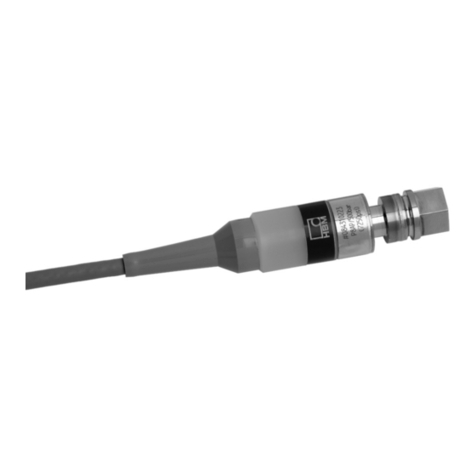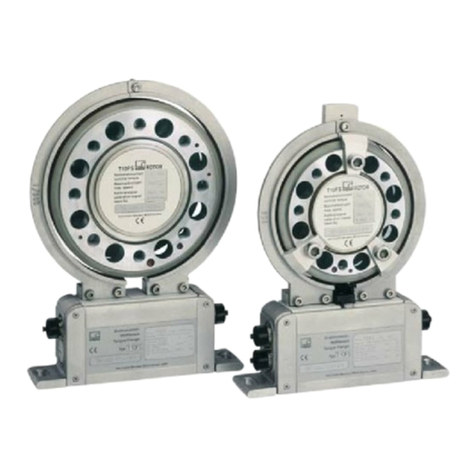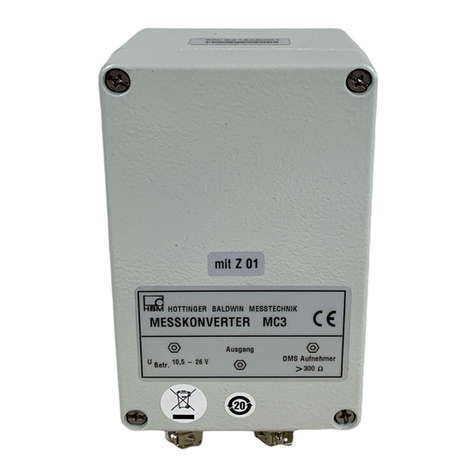
CMC
4
A2319-4.0 en/de/frHBM
Safety instructions
Appropriate use
The CMC piezoelectric force measurement chain is intended for compressive
force measurements in test benches, press‐fit processes, test and inspection
equipment and presses. Use for any additional purpose shall be deemed to
be not appropriate.
In the interests of safety, the measurment chain should only be operated as
described in the Mounting Instructions. It is also essential to comply with the
legal and safety requirements for the application concerned during use. The
same applies to the use of accessories.
The force measurement chain is not a safety element within the meaning of
appropriate use. For safe and trouble‐free operation, this transducer must not
only be correctly transported, stored, sited and mounted but must also be
carefully operated and maintained.
Each time, before starting up the equipment, you must first run a project plan
ning and risk analysis that takes into account all the safety aspects of automa
tion technology. This particularly concerns personal and machine protection.
Additional safety precautions must be taken in plants where malfunctions
could cause major damage, loss of data or even personal injury. In the event
of a fault, these precautions establish safe operating conditions.
This can be done, for example, by mechanical interlocking, error signaling,
limit value switches, etc.
The charge amplifier is not a safety element within the meaning of its intended
use. For safe and trouble‐free operation, this amplifier must not only be cor
rectly transported, stored, sited and mounted but must also be carefully oper
ated and maintained.
The device must not be connected directly to the mains supply. The
maximum supply voltage must not exceed 18 to 30 VDC.
General dangers of failing to follow the safety instructions
The CMC piezoelectric force measurement chain is state of the art and
reliable.
Measurement chains can give rise to remaining dangers if they are
inappropriately installed and operated by untrained personnel.
Everyone involved with siting, starting‐up, maintaining or repairing a force
transducer must have read and understood the Mounting Instructions and in
particular the technical safety instructions.













